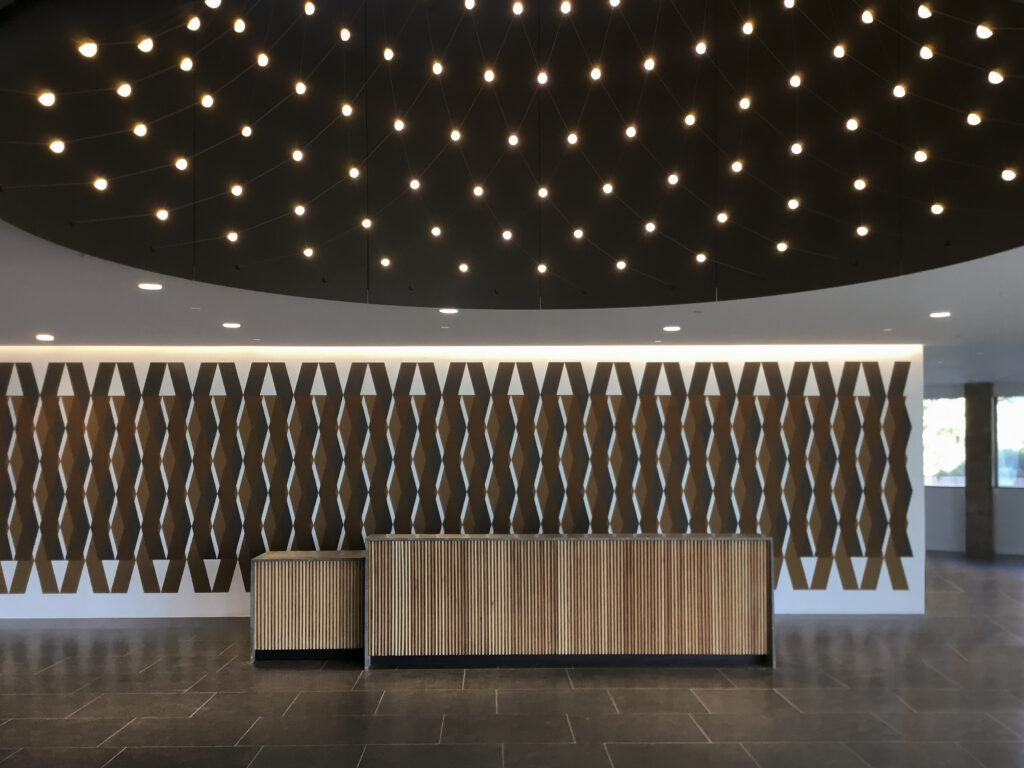Vertically Integrated Model-Based Delivery

To end slavery in the building materials supply chain, we need to change behavior. To do that, we need innovation in the processes owners, architects, engineers, and contractors utilize to design and realize our buildings.
Where most every industry that touches our lives has evolved significantly, in some cases unrecognizably, since the 1950s, the building industry has not. Buildings remain largely non-reproducible assemblies composed of discrete elements, and where data technologies are deployed in their creation, they are often not optimized. Only limited collaboration is possible between the essential professions and building trades. Barriers are raised by fears of liability. Communication is poor and costs continue to climb with tight profit margins forcing builders and suppliers to look for cheaper means no matter how they are sourced.
The AEC industry is highly specialized, where relation- ships between the players are fractured, adversarial, and siloed. Even with the adoption of BIM, the owner, designers, and the build team continue to suffer from broken lines of communication, poor document transactions, job site inefficiency, and a general lack of transparency among all the parties involved. As a result, there is very little understanding of where materials are being sourced, in what conditions, and by whom they are being made. How can we trust the supply chain to be slave-free if we can’t see it, let alone access it? What process models exist that can allow the AEC industry to not only improve the way we design and deliver buildings but to do it in a way that is slave-free?
We can start by looking outside of our own space to commercial enterprises with highly evolved aggregated networks like the aerospace and automotive industries. Their evolutionary approach to Design for Manufacturing and Assembly (DFMA) drives product innovation by inte- grating design and production.1
Much of what goes into developing a manufactured product is resolving its production process. As a result, manufacturing naturally embodies a movement toward process innovation. To design a car, an airplane, even a toy, you must understand all aspects of its development, from concept to market delivery, at the outset. A primary requirement is the intimate knowledge of the supply chain.
By adopting a “system-of-systems” approach, we can radically reimagine how we design and put buildings together. As explained by John Tracy, CTO of Boeing’s Dreamliner program:
System engineering starts with a very specific and rigorous definition of requirements that are synthesized into solutions that are then validated and verified. In order to do this you need a single source of product data or PLM, Product Life Cycle Management system.2
A similar system for the delivery of buildings would revolutionize the industry. All the information to design, manufacture, and assemble a building would be captured in this singular source of instructional data, or what is commonly referred to as the Digital Twin. It would be a comprehensive, iterative, vertically-integrated digital model that would capture every aspect of the process from de- sign to fabrication and assembly, right down to how the base materials are sourced. Information from the supply chain can be embedded directly into the model giving owners, architects, and builders greater confidence in understanding the mechanics and operations of their supply chain. The resulting protocols, originating with digital models and extending through “BLM” or “Building Lifecyle Management” tools, would require suppliers to follow slave-free work practices.
Supply chain verification — assuring suppliers adhere to slave-free protocols — is a primary challenge. Looking to innovators in the tech industry to accelerate the development of digital tools and applications that can interoperate with the Digital Twin to assist in verification of slavery in the supply chain will be critical. Justin Dillon, founder of Made in A Free World and FRDM (free-dom), a company at the intersection of technology and human rights, has the sole mission of improving supply chain transparency. FRDM could have immediate impact as an important tool in monitoring and evaluating slavery as it exists in the supply chain.
By adopting a vertically aggregated model-based delivery process, as utilized in advanced manufacturing, everyone from the owner, designers, and build team can share and query information collaboratively and navigate and understand in real-time who is building our buildings. It will change how our industry interacts with the supply chain, allowing an intimate understanding of its behavior and performance, and provide a more robust and trans- parent means to create a slave-free built environment.
1 Shang, Gao. et al. “Design for Manufacture and Assembly in Construction: a Review,” Building Research & Information. September 5, 2019.
2 Making Affordable Housing Affordable, Real Estate and Tech Summit. June 2020.